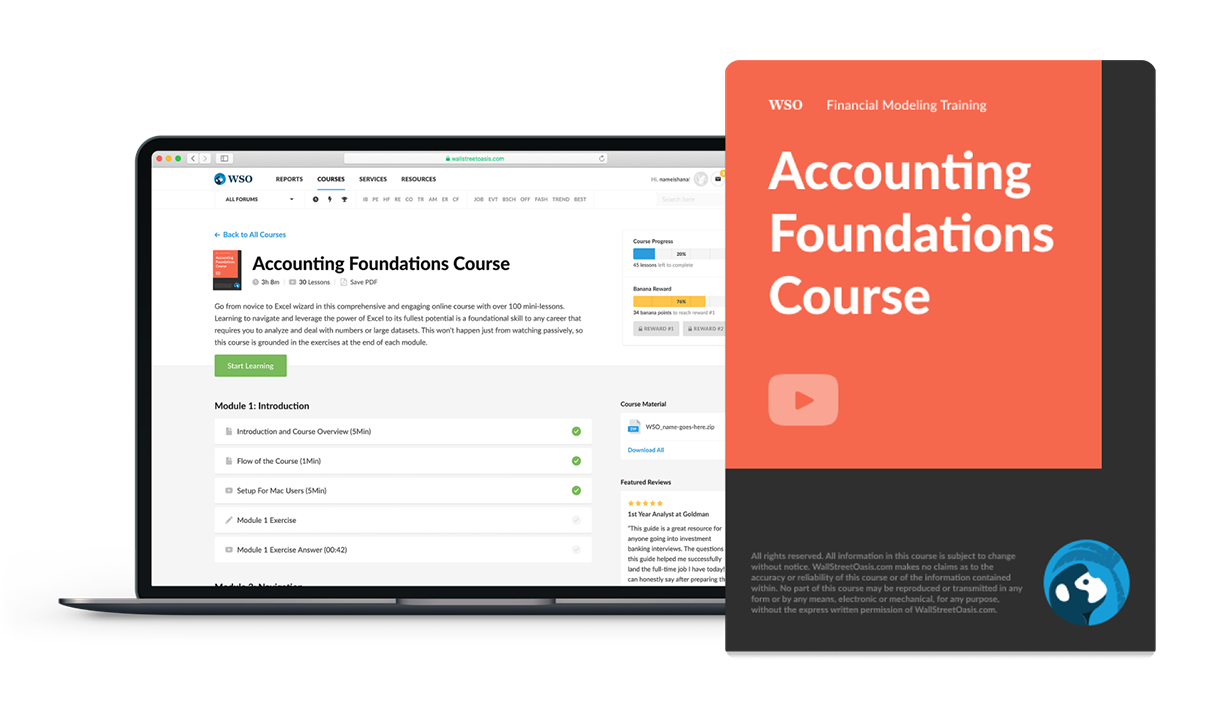Expanded Accounting Equation
Provides greater detail on the different sections of shareholders’ equity.
What is the expanded accounting equation?
The expanded accounting equation is a more detailed version of the common accounting equation. It provides greater detail on the different sections of shareholders’ equity, allowing companies to see how their profits are used.
The expanded version of the common accounting equation is as follows.
Assets = Liabilities + Owner's Equity + Revenues - Expenses + Gains - Losses
Notice how shareholders’ equity has been broken down in the above equation.
A framework for comprehending the ways in which various financial transactions affect a business's overall financial status is offered by the extended accounting equation. It aids in the analysis of the sources, applications, and profitability of the company's operations over a given time frame.
This version of the accounting equation illustrates how different economic events lead to an increase or decrease in shareholders’ equity.
The various economic events that alter shareholders’ equity represent the profits and losses that appear in the shareholders’ equity section of the balance sheet.
The expanded accounting equation does not elaborate on the assets or liabilities sections of the basic accounting equation, as those components are not immediately affected by changes in income.
Key Takeaways
- The expanded version of the common accounting equation provides a more detailed breakdown of a company’s shareholders’ equity.
- The expanded version still includes a company’s total assets and total liabilities but does not make any changes to them.
- The expanded accounting equation is particularly useful when trying to analyze how a company manages and spends its profits.
- Some companies use varying terminology to describe the sections of their balance sheet. For example, Contributed Capital is sometimes called Paid-In Capital.
Understanding The Common Accounting Equation
Before diving into the expanded accounting equation, let’s go over the common accounting equation. This can also be referred to as the basic common accounting equation.
The Common Accounting Equation is as follows:
Assets = Liabilities + Equity
Where,
-
Assets = a company’s resources that have future benefit (e.g. cash, PP&E, accounts receivable)
-
Liabilities = a company’s obligations that must be paid to a lender (e.g. taxes owed, bank loans, accounts payable)
-
Equity = how much the company’s owner(s) has/have invested in the firm (through investing or retained earnings)
Retained earnings represent a company’s remaining net income after all of its dividends have been paid out to its shareholders.
Components of the expanded accounting equation
The following is what each part in the equation stands for:
- Assets: These are resources that the company owns or controls, including money, stock, machinery, and accounts receivable.
- Liabilities: Amounts owed by the company to outside parties, including loans, accounts payable, and accumulated costs.
- Owner's Equity: The owner's claim to the company's assets, or the remaining portion left over after subtracting liabilities from assets. Retained earnings and investments made by the owner are included.
- Revenues: The amount of money a company makes from its main operations, including sales, services, and interest.
- Expenses: The costs that a business incurs to operate or generate revenue, including rent, utilities, supplies, and salary.
- Gains: Favourable monetary results from unrelated business activities that take place outside of the main business operations, like gains from asset sales.
- Losses: Adverse financial results from unrelated transactions that take place outside of the company's main business operations, including write-offs or asset sales losses.
Purpose of the expanded accounting equation
The expanded accounting equation serves several important purposes in financial analysis and reporting:
1. Clarity on Equity
Over time, analysts are able to comprehend the composition of shareholders' equity more clearly by incorporating revenues, expenses, gains, and losses into the accounting equation. This analysis aids in determining how a company uses its profits and how equity is impacted.
2. Understanding Profit Utilisation
Whether a corporation chooses to increase retained earnings, distribute dividends, or reinvest its profits in the company, the equation measures how it uses its profits. Investors and analysts can use this information to assess the company's financial objectives and plans.
3. Impact of Net Income on Equity
The effect of net income on equity is readily apparent to analysts. This knowledge is essential for assessing the profitability and financial stability of the business.
Note
Equity is increased by revenues and decreased by expenses.
4. Analysis of Shareholder Transactions
By examining contributed capital and dividends, investors can comprehend how a company interacts with its owners. This analysis provides insights into shareholder relations and can influence investment decisions.
5. Tracking Changes in Shareholders' Equity
The expanded accounting equation facilitates tracking changes in shareholders' equity between periods. This information helps in assessing the company's financial performance and its ability to generate shareholder value over time.
6. Detailed Financial Analysis
While the basic accounting equation provides a simple calculation of a firm's value, the expanded version offers more detail, making it suitable for in-depth financial analysis.
Note
An expanded accounting equation enables analysts to delve deeper into the factors driving changes in equity and financial position.
7. Evaluation by Creditors
Lenders and creditors can use the expanded equation to evaluate how a company allocates its funds and manages its financial resources over time. This analysis helps in assessing the company's creditworthiness and risk profile.
8. Creditor Assessment
By utilizing the extended formula, creditors and lenders can assess a company's financial resource allocation and management over an extended period of time. This analysis aids in determining the risk profile and creditworthiness of the business.
Limitation of the expanded accounting equation
The equation has the following drawback that must be considered
- Complexity: Financial statements and analysis are made more complex by the extended accounting equation, which may make it harder for non-financial professionals to understand.
- Subjectivity in Measurement: Decisions about gains and losses, for example, may be made subjectively, which could result in disparities in financial reporting and analysis.
- Ignoring Non-Monetary Elements: Companies' success and long-term viability may be impacted by non-monetary elements that are missed when they just concentrate on financial measurements.
- Added Reporting Burden: Compiling more information into financial statements can make businesses have to report on their activities more frequently and spend more time and money gathering and interpreting financial data.
- Possibility of Manipulation: If the enlarged equation is not well supervised and controlled, it can present greater chances for financial data manipulation or misrepresentation.
expanded accounting equation Example
Let’s look at an example of the expanded version of the accounting equation.
In this example, Company X engaged in the following transactions during the month of February 2022:
-
February 01: 10,000 shares of common stock were issued at $10 per share
-
February 05: Purchased office supplies for cash $300
-
February 10: Purchased office equipment for cash, $5,000
-
February 15: Purchased business car for $30,000 - Paid $10,000 cash and issued a note for the balance
-
February 20: Billed clients $25,000 on account
-
February 25: Paid utility bills for the month of February, $200
-
February 27: Received $18,000 cash from clients billed on February 20
-
February 28: Paid office rent for the month of February, $750
-
February 28: Cash dividend paid $4,000
-
February 28: Paid salary for the month of February in cash $8,000
| Assets | Liabilities | Shareholder's Equity | ||||
|---|---|---|---|---|---|---|
| Paid-In Capital | Revenue | Expenses | Dividends | |||
| Feb 01 - Feb 05 | 100,000 – 300 + 300 | 100,000 | ||||
| Feb 10 | 100,000 - 5,000 + 5,000 | 100,000 | ||||
| Feb 15 | 100,000 - 10,000 + 30,000 | 20,000 | 100,000 | |||
| Feb 20 | 120,000 + 25,000 | 20,000 | 100,000 | 25,000 | ||
| Feb 25 | 145,000 - 200 | 20,000 | 100,000 | 25,000 | 200 | |
| Feb 27 | 144,800 - 18,000 + 18,000 | 20,000 | 100,000 | 25,000 | 200 | |
| Feb 28 | 144,800 - 750 | 20,000 | 100,000 | 25,000 | 200 + 750 | |
| Feb 28 | 144,050 - 4,000 | 20,000 | 100,000 | 25,000 | 950 | 4,000 |
| Feb 28 | 144,050 - 8,000 | 20,000 | 100,000 | 25,000 | 950 + 8,000 | 4,000 |
| 132,050 | 20,000 | 100,000 | 25,000 | 8,950 | 4,000 | |
Check using the expanded accounting equation:
Assets = Liabilities + [CC + BRE + R - E - D]
132,050 = 20,000 + 100,000 + 25,000 - 8,950 - 4,000
132,050 = 136,050
Conclusion
The extended accounting equation provides a more thorough understanding of a company's financial condition and performance, making it a useful tool for financial analysis and reporting.
While there are many benefits, including greater communication, analysis, and clarity, there are drawbacks as well, like complexity, measurement subjectivity, and an increased workload for reporting.
Notwithstanding these difficulties, using the enlarged equation frequently has more advantages than disadvantages, especially for stakeholders looking for in-depth knowledge of a company's financial operations and business plans.
Better decisions can be made by creditors, analysts, and investors by knowing the subtleties of the extended accounting equation and its repercussions. This will benefit all parties involved.
Also, the extended accounting equation is essential for promoting accountability, openness, and efficient decision-making.

Everything You Need To Build Your Accounting Skills
To Help You Thrive in the Most Flexible Job in the World.
Free Resources
To continue learning and advancing your career, check out these additional helpful WSO resources:



or Want to Sign up with your social account?